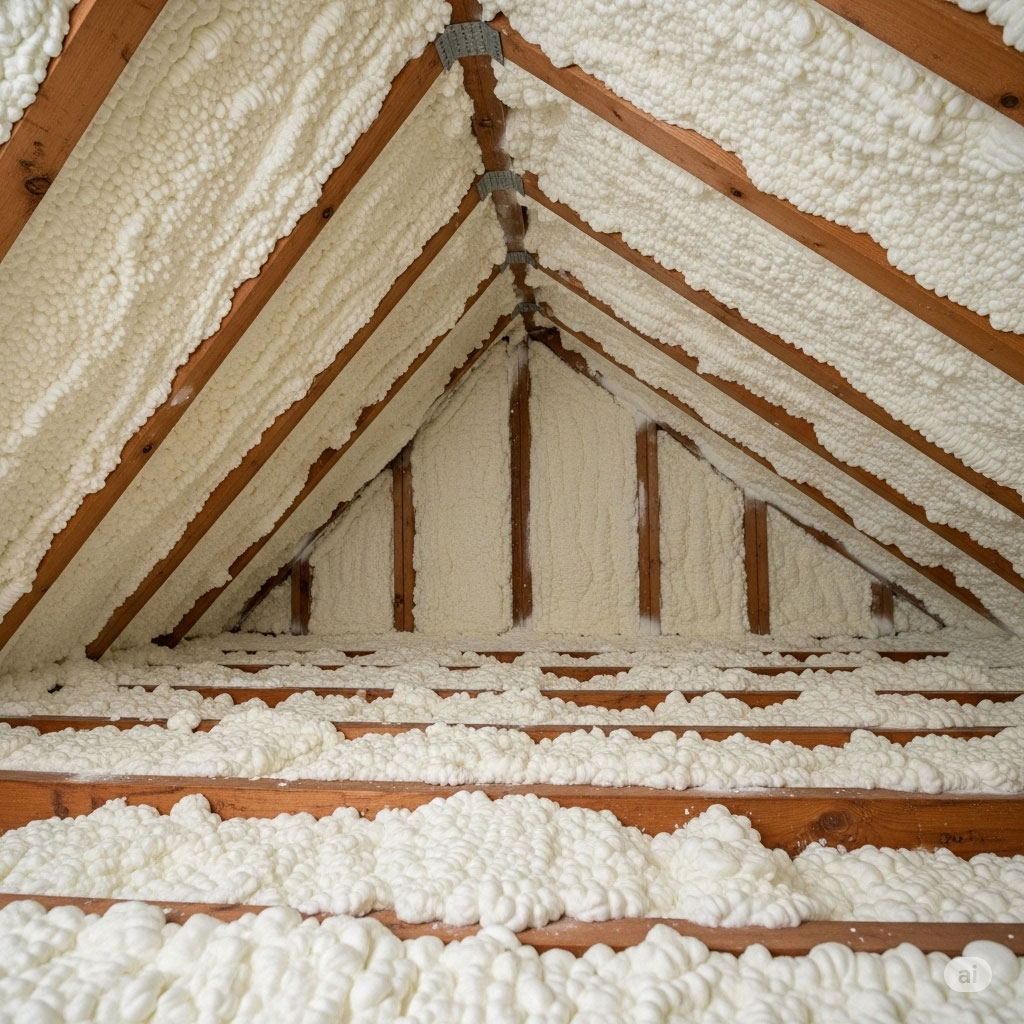Understanding Attic Spray Foam Insulation
Spray foam insulation provides superior insulation performance by creating an airtight seal, which prevents heat transfer and air leakage. It also functions as a moisture barrier, significantly reducing the risk of mold and mildew growth in your attic.
This insulation method offers environmental benefits as well, being made from recyclable materials and contributing to reduced energy consumption. There are two primary types: open-cell spray foam, which has a lower density and is more flexible, and closed-cell spray foam, which is denser and offers superior thermal resistance.
Preparing Your Attic for Insulation
A successful insulation project begins with proper preparation. It’s essential to clean and declutter your attic, removing any debris, old insulation, or items that might interfere with the process.
Crucially, you must identify and seal any cracks, gaps, or openings around pipes, vents, and electrical fixtures, as these are common areas for air leaks. This preparation ensures that the spray foam insulation can create an effective air barrier, maximizing energy efficiency and reducing drafts.
Applying the Spray Foam Insulation
The application process involves mixing the chemical base and foaming agent using a specialized spray foam insulation machine, following the manufacturer’s instructions.
Begin spraying the foam insulation at the highest point of your attic, typically the roofline, and work your way downwards. Ensure an even and consistent application to create a seamless air barrier.
Pay extra attention to corners, edges, and hard-to-reach areas, as these are often prone to air leakage. Allow adequate curing time as recommended by the manufacturer to ensure the insulation reaches its maximum performance and durability.
Always wear appropriate safety gear, ensure proper ventilation, and follow safety guidelines for equipment and chemical storage.
Post-Insulation Cleanup and Maintenance
After the spray foam has cured, trim any excess foam that may have expanded outside the desired insulation area using a knife or saw for a clean finish. Inspect the insulation for any missed spots or thin areas and touch up as needed to ensure proper coverage and maximum energy efficiency.
Maintaining adequate attic ventilation is crucial both during and after the insulation process to promote air circulation and prevent potential problems like moisture buildup.
Cost and Efficiency of Spray Foam Insulation
Spray foam insulation minimizes heat transfer, which in turn reduces the need for excessive heating or cooling. This directly translates to reduced energy consumption and a lower carbon footprint, making it an environmentally friendly choice.
While the initial cost of spray foam insulation can be higher than traditional methods, its long-term benefits in energy savings and improved home comfort often provide a good return on investment.




